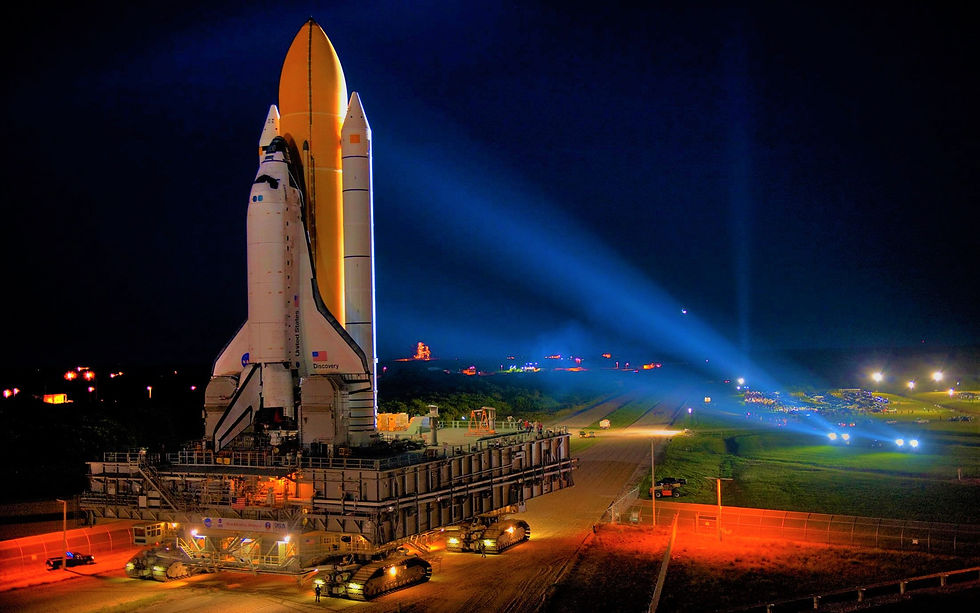Astronout
- pilot55kassas55
- 16 يوليو 2022
- 3 دقيقة قراءة
An astronaut is a person trained, equipped, and deployed by a human spaceflight program to serve as a commander or crew member aboard a spacecraft. Although generally reserved for professional space travelers, the term is sometimes applied to anyone who travels into space, including scientists, politicians, journalists, and tourists.
Who Can Be Astronout ?
Being an astronout is not easy and not any one can be an astronout .
The astronout should obtain some characteristics , and should have a sufficient knowledge in Physics , Math , Chemistry , and Mechanical Engineering .
NASA has strict requirments to accept any candidates:
Be a U.S. citizen
Possess a master's degree* in a STEM field, including engineering, biological science, physical science, computer science or mathematics, from an accredited institution.
Have at least two years of related professional experience obtained after degree completion or at least 1,000 hours pilot-in-command time on jet aircraft.
Be able to pass the NASA long-duration flight astronaut physical .
Training
Astronaut training describes the complex process of preparing astronauts in regions around the world for their space missions before, during and after the flight, which includes medical tests , physical training, extra-vehicular activity (EVA) training, procedure training, rehabilitation process, as well as training on experiments they will accomplish during their stay in space.
Virtual and physical training facilities have been integrated to familiarize astronauts with the conditions they will encounter during all phases of flight and prepare astronauts for a microgravity environment. Special considerations must be made during training to ensure a safe and successful mission, which is why the Apollo astronauts received training for geology field work on the Lunar surface and why research is being conducted on best practices for future extended missions, such as the trip to Mars.
At NASA, following the selection phase, the so-called "AsCans" (Astronaut candidates) have to undergo up to two years of training/indoctrination period to become fully qualified astronauts. Initially, all AsCans must go through basic training to learn both technical and soft skills. There are 16 different technical courses in:
Life support systems
Orbital mechanics
Payload deployment
Earth observations
Space physiology and medicine
SpaceSuit
A spacesuit is much more than a set of clothes astronauts wear on spacewalks. A fully equipped spacesuit is really a one-person spacecraft. The formal name for the spacesuit used on the space shuttle and International Space Station is the Extravehicular Mobility Unit, or EMU. "Extravehicular" means outside of the vehicle or spacecraft. "Mobility" means that the astronaut can move around in the suit. The spacesuit protects the astronaut from the dangers of being outside in space.
Why Do Astronauts Need Spacesuits? Spacesuits help astronauts in several ways. Spacewalking astronauts face a wide variety of temperatures. In Earth orbit, conditions can be as cold as minus 250 degrees Fahrenheit. In the sunlight, they can be as hot as 250 degrees. A spacesuit protects astronauts from those extreme temperatures.
Spacesuits also supply astronauts with oxygen to breathe while they are in the vacuum of space. They contain water to drink during spacewalks. They protect astronauts from being injured from impacts of small bits of space dust. Space dust may not sound very dangerous, but when even a tiny object is moving many times faster than a bullet, it can cause injury. Spacesuits also protect astronauts from radiation in space. The suits even have visors to protect astronauts' eyes from the bright sunlight .
What Are the Parts of a Spacesuit?
The spacesuit consists of several pieces. The Hard Upper Torso covers the astronaut's chest. The arm assembly covers the arms and connects to the gloves. The helmet and Extravehicular Visor Assembly are designed to protect the astronaut's head while still allowing him or her to see as much as possible. The Lower Torso Assembly covers the astronaut's legs and feet. The flexible parts of the suit are made from several layers of material. The layers perform different functions, from keeping oxygen within the spacesuit to protecting from space dust impacts.
Underneath the spacesuit, astronauts wear a Liquid Cooling and Ventilation Garment. Tubes are woven into this tight-fitting piece of clothing that covers the entire body except for the head, hands and feet. Water flows through these tubes to keep the astronaut cool during the spacewalk.
On the back of the spacesuit is a backpack called the Primary Life Support Subsystem. This backpack contains the oxygen that astronauts breathe during a spacewalk. It also removes carbon dioxide that astronauts exhale. The backpack also provides electricity for the suit. A fan moves the oxygen through the spacesuit and life support systems, and a water tank holds the cooling water that flows through the Liquid Cooling and Ventilation Garment.
Also attached to the back of the suit is a device called the Simplified Aid for Extravehicular Activity Rescue, or SAFER. SAFER has several small thruster jets. If an astronaut became separated from the space station, he or she could use SAFER to fly back.





تعليقات